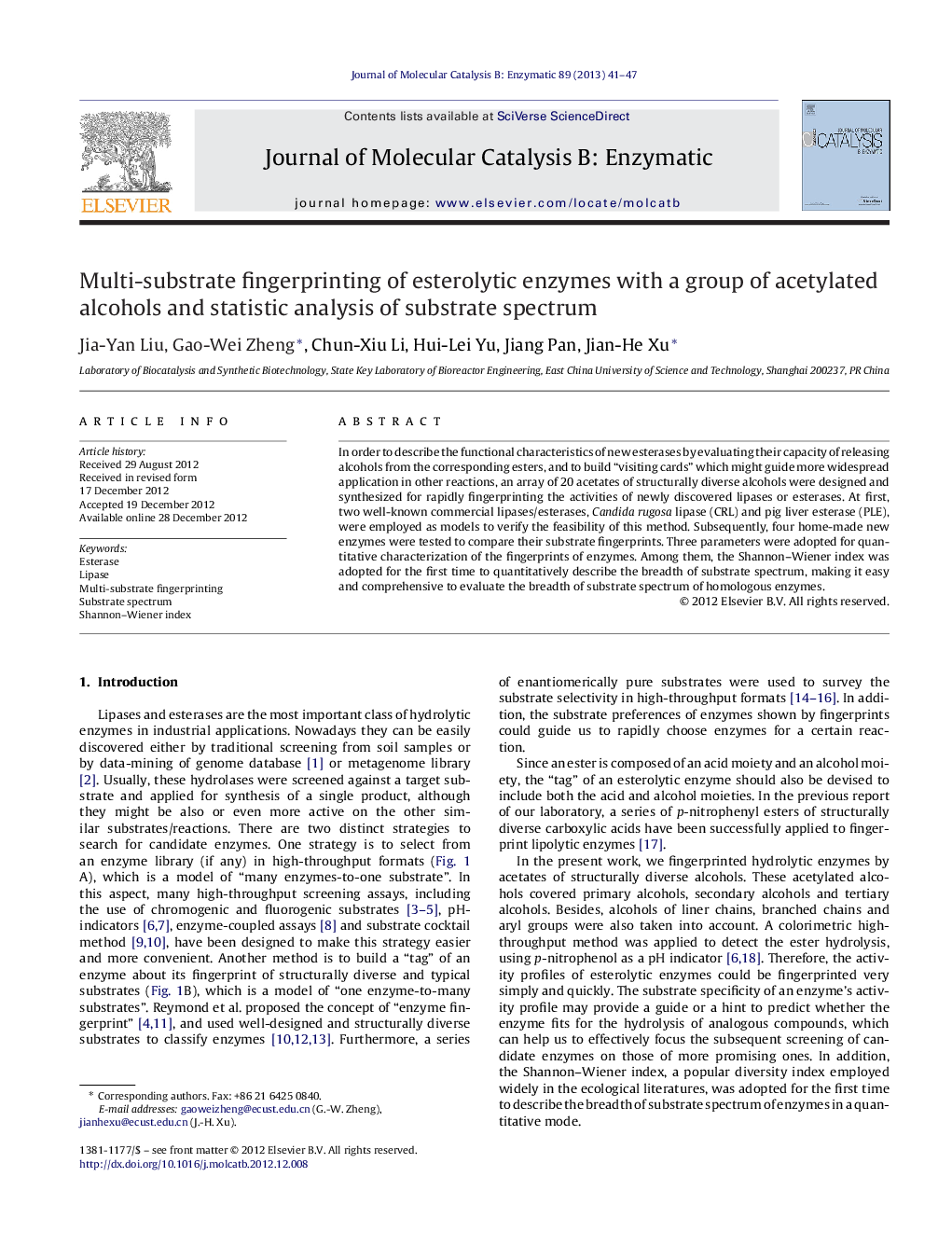| Article ID | Journal | Published Year | Pages | File Type |
|---|---|---|---|---|
| 70020 | Journal of Molecular Catalysis B: Enzymatic | 2013 | 7 Pages |
In order to describe the functional characteristics of new esterases by evaluating their capacity of releasing alcohols from the corresponding esters, and to build “visiting cards” which might guide more widespread application in other reactions, an array of 20 acetates of structurally diverse alcohols were designed and synthesized for rapidly fingerprinting the activities of newly discovered lipases or esterases. At first, two well-known commercial lipases/esterases, Candida rugosa lipase (CRL) and pig liver esterase (PLE), were employed as models to verify the feasibility of this method. Subsequently, four home-made new enzymes were tested to compare their substrate fingerprints. Three parameters were adopted for quantitative characterization of the fingerprints of enzymes. Among them, the Shannon–Wiener index was adopted for the first time to quantitatively describe the breadth of substrate spectrum, making it easy and comprehensive to evaluate the breadth of substrate spectrum of homologous enzymes.
Graphical abstractShannon–Wiener index was adopted for the first time to quantitatively evaluate the breadth of substrate spectrum of newly discovered lipases or esterases, using an array of 20 acetates of structurally diverse alcohols.Figure optionsDownload full-size imageDownload as PowerPoint slideHighlights► An array of 20 acetates of structurally diverse alcohols was designed and synthesized for rapidly fingerprinting the activities. ► Different preference of esterase and lipase to acyl groups were compared. Different acyl groups for fingerprinting the activities of esterase and lipase were recommended. ► The Shannon–Wiener index was adopted for the first time to describe the breadth of substrate spectrum of enzymes in a quantitative mode.
